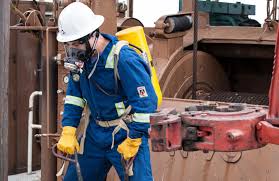Introduction
In the oil and gas exploration industry, particularly when dealing with hydrogen sulfide (H2S), ensuring the quality of breathing air is not just a regulatory requirement but a critical component of workplace safety and operational efficiency. H2S, a highly toxic and flammable gas, presents significant risks to workers, making the provision of uncontaminated breathing air an absolute necessity. This article explores the uses and importance of quality breathing air in environments where H2S is present, emphasizing its role in safeguarding health, maintaining productivity, and adhering to industry standards.
Understanding H2S and Its Hazards
Hydrogen sulfide is a colorless gas known for its distinctive smell of rotten eggs. It is a byproduct of the decomposition of organic matter and is commonly encountered in natural gas and crude oil exploration and production. H2S is highly hazardous; exposure to even low concentrations can cause eye irritation, sore throat, cough, shortness of breath, and fluid in the lungs. High concentrations can be fatal, leading to respiratory failure and death within minutes. Therefore, protecting workers from H2S exposure is paramount.
Regulatory Requirements
Various regulations govern the safety standards related to H2S exposure in the workplace. Agencies such as the Occupational Safety and Health Administration (OSHA) in the United States have established permissible exposure limits (PELs) and guidelines for the use of personal protective equipment (PPE). These regulations mandate that employers provide adequate respiratory protection to workers in environments where H2S concentrations exceed safe levels.
The Role of Quality Breathing Air
In H2S environments, quality breathing air systems are essential for several reasons:
Health and Safety
The primary use of quality breathing air is to ensure the health and safety of workers. In areas where H2S is present, the air quality can rapidly deteriorate, making it unsafe to breathe without protection. High-quality breathing air systems, such as self-contained breathing apparatus (SCBA) and supplied air respirators (SARs), provide workers with a continuous supply of clean, breathable air, preventing H2S inhalation and its associated health risks.
Emergency Situations
In the event of an H2S leak or unexpected release, having access to reliable breathing air can mean the difference between life and death. Emergency response protocols rely heavily on the availability of quality breathing air to ensure that rescue operations can be conducted safely. Workers equipped with SCBA or SARs can evacuate hazardous areas, assist in containment efforts, and provide first aid to affected colleagues without compromising their own safety.
Operational Efficiency
Maintaining productivity in H2S environments requires that workers can perform their tasks without interruption. Quality breathing air systems enable workers to focus on their duties without the constant fear of exposure to toxic gases. This not only enhances individual performance but also contributes to overall operational efficiency. Moreover, knowing that their health is protected allows workers to maintain higher morale and engagement.
Compliance with Standards
Adhering to industry standards and regulations is crucial for the legal and ethical operation of oil and gas exploration companies. Providing quality breathing air systems ensures compliance with OSHA standards, as well as other local and international regulations. Compliance not only avoids legal repercussions but also enhances the company’s reputation as a responsible and safety-conscious organization.
Types of Breathing Air Systems
There are several types of breathing air systems used in H2S environments, each suited to different operational needs and circumstances.
Self-Contained Breathing Apparatus (SCBA)
SCBA systems are commonly used in environments with high concentrations of H2S. They consist of a high-pressure tank, a regulator, and a face mask, providing the wearer with a portable supply of breathable air. SCBA systems are ideal for emergency situations and confined spaces where mobility and independence are crucial.
Supplied Air Respirators (SAR)
SAR systems deliver air from a stationary source through a hose to the user’s face mask. These systems are suitable for extended work periods in H2S environments, as they offer an unlimited supply of breathable air from a central source. SARs are often used in combination with SCBA systems, providing a comprehensive solution for various operational scenarios.
Air Purifying Respirators (APR)
While APR systems are generally not recommended for high-concentration H2S environments, they can be used in lower-risk areas where the gas concentration is below dangerous levels. APRs filter out contaminants from the ambient air but do not provide the same level of protection as SCBA or SAR systems in high-risk scenarios.
Ensuring Air Quality
To ensure the effectiveness of breathing air systems, the quality of the air supplied must meet stringent standards. The air must be free of contaminants, including hydrocarbons, carbon monoxide, and other harmful substances. Regular testing and maintenance of air supply systems are essential to guarantee that the air quality remains within safe limits.
Air Quality Standards
Organizations such as the Compressed Gas Association (CGA) and the National Institute for Occupational Safety and Health (NIOSH) provide guidelines for air quality standards. These standards specify the acceptable levels of various contaminants and outline the procedures for testing and certifying breathing air systems.
Maintenance and Monitoring
Regular maintenance and monitoring of breathing air systems are crucial to ensure their reliability. This includes routine inspection of equipment, replacement of filters, and testing of air quality. Employers should establish a maintenance schedule and ensure that all equipment is serviced by qualified personnel.
Conclusion
In the H2S oil and gas exploration industry, the provision of quality breathing air is an indispensable aspect of workplace safety and operational integrity. Protecting workers from the hazards of H2S exposure through the use of reliable breathing air systems not only ensures their health and safety but also enhances productivity and compliance with regulatory standards. As the industry continues to advance, the importance of maintaining high standards for breathing air quality will remain a fundamental priority, underscoring the commitment to creating safe and sustainable working environments.
Contact https://max-air.com today and see how we can help you.

